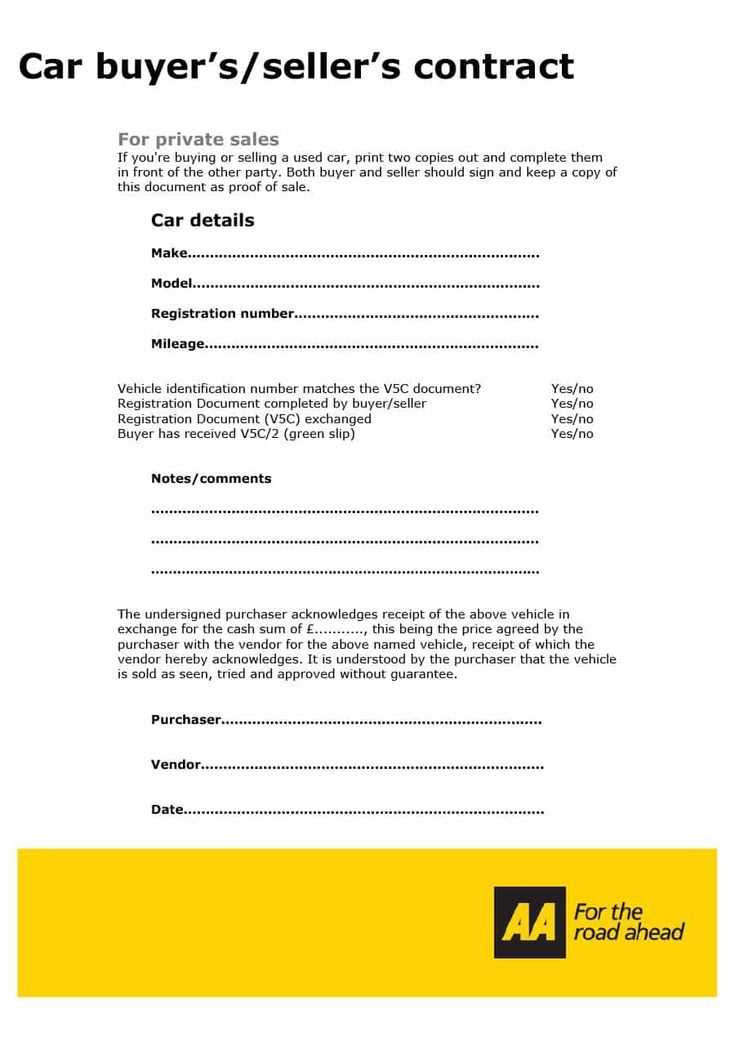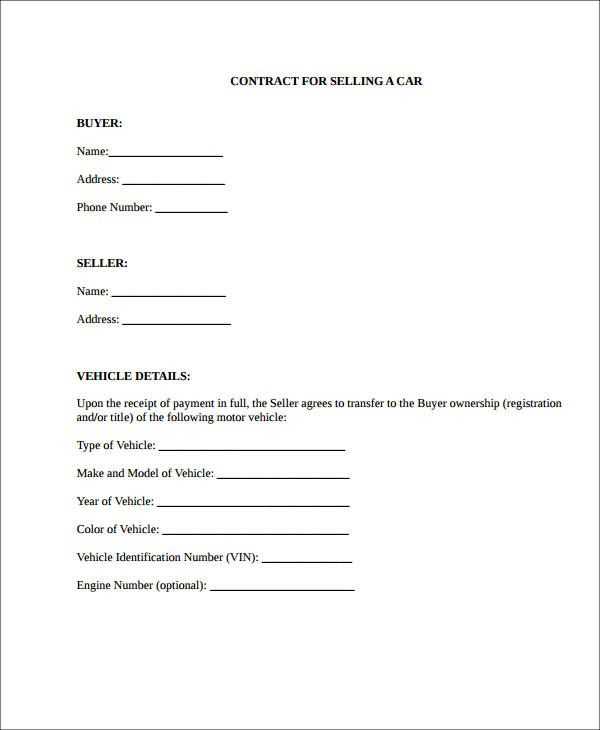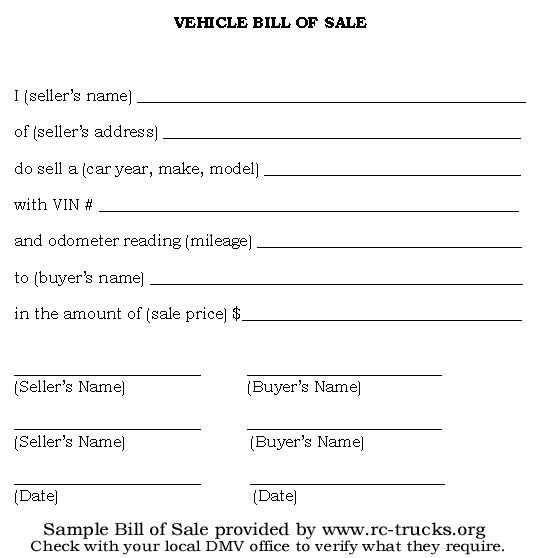
Make sure your receipt is clear and straightforward. A well-structured document will protect both the seller and the buyer. Begin with the basic details: the buyer’s and seller’s full names, addresses, and contact information. Don’t forget to include the date of the sale.
Next, outline the car’s key specifics. Include the make, model, year, Vehicle Identification Number (VIN), and odometer reading. This helps confirm the vehicle’s identity and establishes its condition at the time of the transaction.
The price of the vehicle should be clearly stated, along with any deposit or payment terms agreed upon. Specify whether the sale is “as-is” or if any warranties or guarantees are included. Additionally, both parties should sign and date the document to finalize the sale.
Writing a Receipt for a Private Car Sale
Begin the receipt with the full names and addresses of both the seller and the buyer. Clearly state the date of the transaction and the total sale price of the car. Ensure the description of the car includes the make, model, year, Vehicle Identification Number (VIN), and current mileage. Specify that the vehicle is sold as-is, without warranties. Both parties should sign the document, confirming agreement to the terms outlined. Keep a copy for each party as proof of the transaction.
Creating the Basic Structure of the Receipt

Begin by including the date at the top of the receipt. This helps both parties remember the transaction’s timing. Add the names and contact information of both the buyer and the seller. Clearly state the vehicle’s make, model, year, VIN number, and any other distinguishing details. Provide a section for the price paid, along with any agreed-upon payment method, whether cash, check, or another form of payment.
Ensure you include a clause stating the vehicle is sold “as is,” with no warranties, unless otherwise specified. Clearly indicate that both parties agree to the terms listed, which can be confirmed by signatures from the buyer and seller. This structure ensures transparency and avoids future disputes.
Finally, leave space for any additional comments or details about the sale, such as agreed repairs or conditions. This section ensures all aspects of the sale are covered.
Including Vehicle and Buyer Information

Begin by clearly stating the full name and contact details of both the seller and the buyer. This ensures that both parties can be easily identified if needed later. Include the buyer’s and seller’s full legal names, addresses, and phone numbers. If possible, add email addresses for further communication.
Next, specify the vehicle’s make, model, year, and vehicle identification number (VIN). These details confirm the exact vehicle being sold. Include the odometer reading at the time of sale to document the mileage.
It’s also important to mention the registration and license plate number. These identifiers help verify the car’s legal status and ownership. Be sure to list any additional relevant vehicle details like color, engine type, or special features that set the car apart.
Specifying Payment Details and Terms

Clearly outline the agreed payment method and schedule. Be specific about how the buyer will pay, whether through cash, bank transfer, or another method. Indicate the total amount and any deposit, if applicable.
- Payment Method: State the exact form of payment. Specify if it’s a wire transfer, check, or cash. Make sure both parties are comfortable with this method.
- Deposit Amount: If a deposit is required, include the amount and due date. Confirm how the remaining balance will be settled.
- Payment Schedule: Detail any milestones or deadlines for payments. If there’s a balance due after the deposit, specify when the final payment should be made.
- Late Payment Terms: Define penalties or interest for late payments, if necessary. Be clear about the consequences to avoid future confusion.
Make sure to include any conditions for returning or refunding payments, and confirm that the payment terms are legally binding. Both parties should sign to acknowledge these terms before completing the sale.


